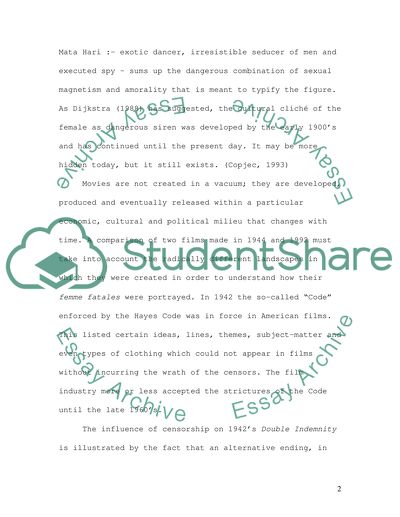Cite this document
(“Film Noir's Femme Fatale Book Report/Review Example | Topics and Well Written Essays - 3000 words”, n.d.)
Film Noir's Femme Fatale Book Report/Review Example | Topics and Well Written Essays - 3000 words. Retrieved from https://studentshare.org/performing-arts/1507265-film-noirs-femme-fatale
Film Noir's Femme Fatale Book Report/Review Example | Topics and Well Written Essays - 3000 words. Retrieved from https://studentshare.org/performing-arts/1507265-film-noirs-femme-fatale
(Film Noir'S Femme Fatale Book Report/Review Example | Topics and Well Written Essays - 3000 Words)
Film Noir'S Femme Fatale Book Report/Review Example | Topics and Well Written Essays - 3000 Words. https://studentshare.org/performing-arts/1507265-film-noirs-femme-fatale.
Film Noir'S Femme Fatale Book Report/Review Example | Topics and Well Written Essays - 3000 Words. https://studentshare.org/performing-arts/1507265-film-noirs-femme-fatale.
“Film Noir'S Femme Fatale Book Report/Review Example | Topics and Well Written Essays - 3000 Words”, n.d. https://studentshare.org/performing-arts/1507265-film-noirs-femme-fatale.


